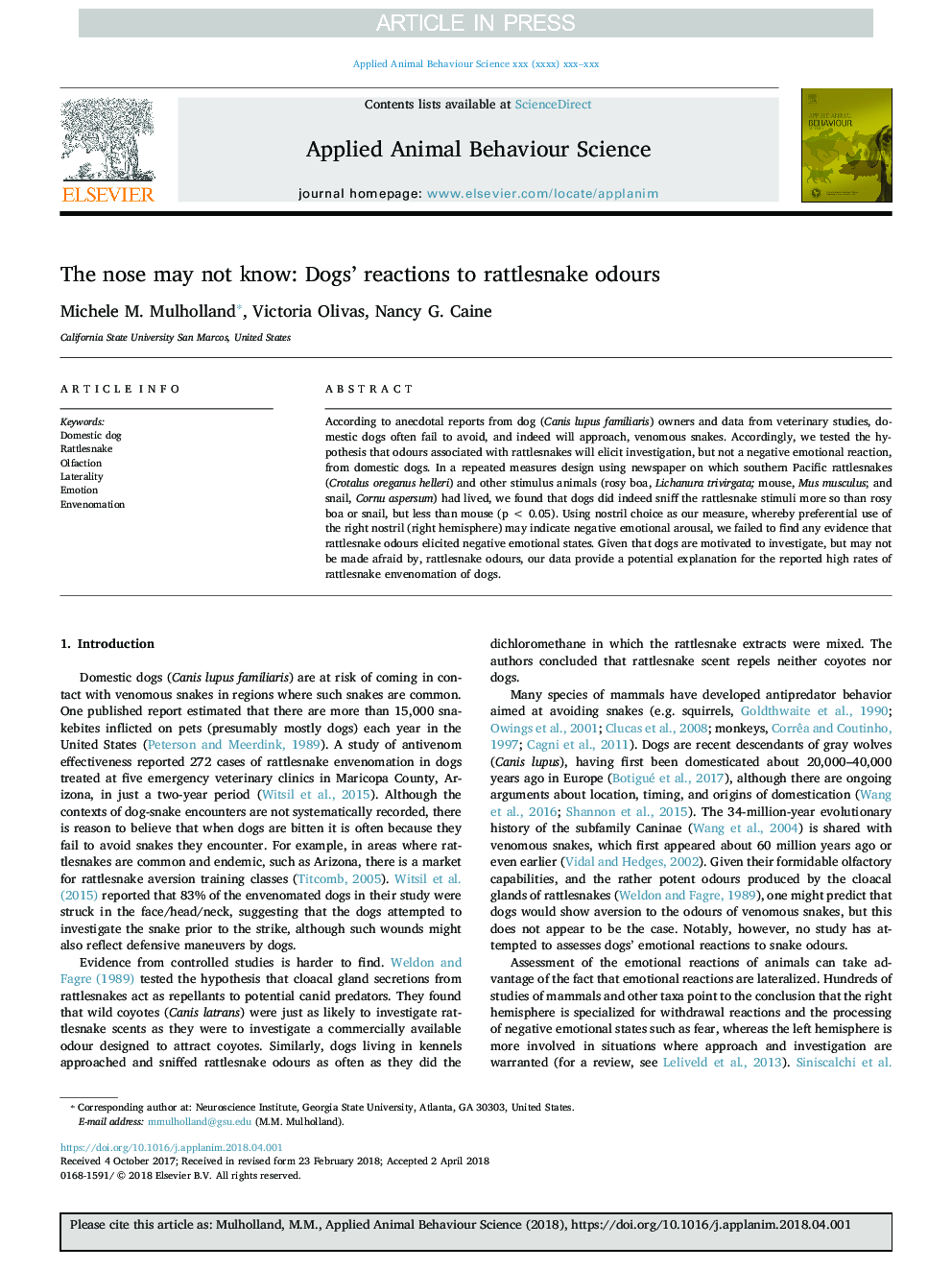| Article ID | Journal | Published Year | Pages | File Type |
|---|---|---|---|---|
| 8882760 | Applied Animal Behaviour Science | 2018 | 5 Pages |
Abstract
According to anecdotal reports from dog (Canis lupus familiaris) owners and data from veterinary studies, domestic dogs often fail to avoid, and indeed will approach, venomous snakes. Accordingly, we tested the hypothesis that odours associated with rattlesnakes will elicit investigation, but not a negative emotional reaction, from domestic dogs. In a repeated measures design using newspaper on which southern Pacific rattlesnakes (Crotalus oreganus helleri) and other stimulus animals (rosy boa, Lichanura trivirgata; mouse, Mus musculus; and snail, Cornu aspersum) had lived, we found that dogs did indeed sniff the rattlesnake stimuli more so than rosy boa or snail, but less than mouse (pâ¯<â¯0.05). Using nostril choice as our measure, whereby preferential use of the right nostril (right hemisphere) may indicate negative emotional arousal, we failed to find any evidence that rattlesnake odours elicited negative emotional states. Given that dogs are motivated to investigate, but may not be made afraid by, rattlesnake odours, our data provide a potential explanation for the reported high rates of rattlesnake envenomation of dogs.
Related Topics
Life Sciences
Agricultural and Biological Sciences
Animal Science and Zoology
Authors
Michele M. Mulholland, Victoria Olivas, Nancy G. Caine,
